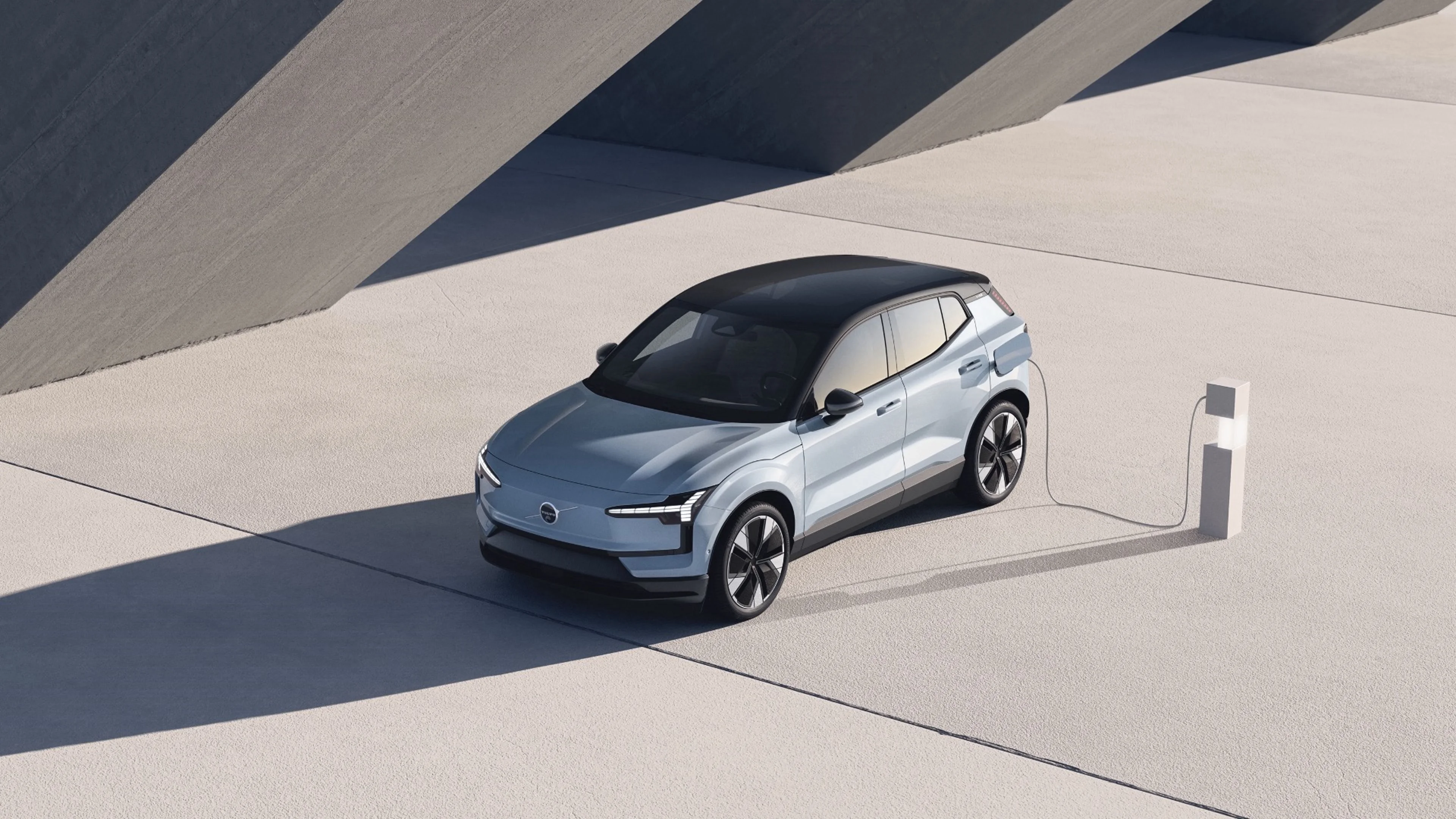LCA report: The EX30 delivers what it says on the tin
Our new Volvo EX30 has the smallest carbon footprint of any fully electric Volvo car to date¹. That’s according to the life cycle assessment report for the EX30 which we just released.

The Volvo EX30 in cloud blue
Our updated sustainability ambitions are as clear as a blue sky on a hot summer day: we want to achieve net zero greenhouse gas emissions and become a circular business by 2040.
A key component to get there is to transform our lineup of cars into a fully electric armada. And as we do so, we’re committed to being transparent about the impact our cars have on the environment.
That’s why we’ve now completed comprehensive life cycle assessment (LCA) reports of the carbon footprint for all three of our fully electric cars: the Volvo EX40, EC40 and now, EX30 . By making these reports available to the public, we hope to help customers make informed decisions when choosing their next electric car .
“Transitioning to electric cars is key to limiting climate change, but increased transparency about its challenges is needed to reduce their emissions even further,” says Jonas Otterheim, head of climate action at Volvo Cars. “By studying the EX30’s carbon footprint and identifying its primary materials and processes, we aim to provide valuable insights that can help guide decisions in our company towards becoming more sustainable, as well as amongst the wider industry.”
The LCA report of the EX30, available here, highlights the main materials and processes that contribute to the greenhouse gas emissions of our smallest all-electric SUV. It covers the car’s life cycle – from the extraction and refining of raw materials to everything along the way until the car’s end-of-life. The report shows that the Volvo EX30 has the smallest carbon footprint of any fully electric Volvo car to date ¹. The total carbon footprint is 23 tonnes, which is approximately 60 per cent less than the petrol-driven XC40 ICE3. The figure is based on 200,000 kilometres of driving and using charging electricity from the European electricity mix. The devil’s in the details, so let’s delve a little deeper into the report’s specifics. Battery type and electricity mix have a big impact The choice of battery type and electricity source significantly influences the carbon footprint of the car. To give our customers more freedom to choose the battery technology that best suits their personal needs, the EX30 comes with two battery options. The first option, used in the Single Motor version, is a lithium iron phosphate (LFP) battery with a 51 kWh capacity. The second option, used in the Single Motor Extended Range version, is a nickel, cobalt, and manganese (NMC) option with a 69 kWh capacity. The NMC battery offers longer ranges and faster charging times, but also shows a higher environmental impact across its lifetime than the LFP battery. On average, the LFP battery has a life cycle carbon footprint that is 16 per cent lower than the NMC battery. Using wind-based electricity to charge the EX30 also substantially reduces the carbon footprint compared to global or European electricity mixes, by approximately 42 per cent and 22 per cent respectively ². This underlines the need to accelerate investments in renewable energy infrastructure globally for electric cars to reach their full climate potential. An important step towards our ambitions A car is not just driven. It is also designed, developed, built and transported – which gives us many opportunities to reduce greenhouse gas emissions and come closer to achieving our sustainability ambitions. The EX30 already has the highest proportion of recycled materials among all Volvo cars to date. Approximately 25 per cent of the aluminum, nearly 20 per cent of the steel, and about 17 per cent of all plastics used in the car are recycled. Additionally, across our supply chain and manufacturing, there are ongoing exciting initiatives aiming to reduce emissions even further. For instance, by 2025, our battery suppliers are aiming to cut emissions from manufacturing LFP batteries by 20 per cent and NMC batteries by 46 per cent. They plan to achieve this by shifting to renewable energy sources, increasing the use of recycled materials, and reducing emissions in their supply chains. You can read the full LCA report here. ¹ the lowest carbon footprint of any fully electric Volvo car to date statement relates to globally available products over 200,000 kilometres of driving using the same energy mix ² based on Single Motor equipped with an LFP battery (51 kWh) with 15 years and 200,000 kilometres of driving, using an EU28 average energy mix